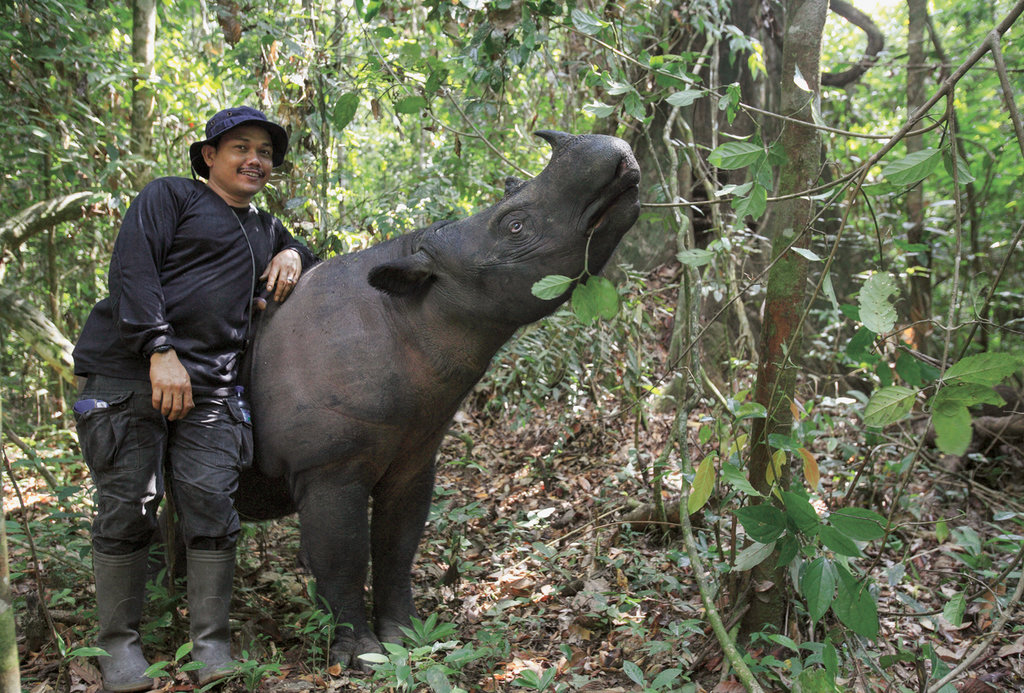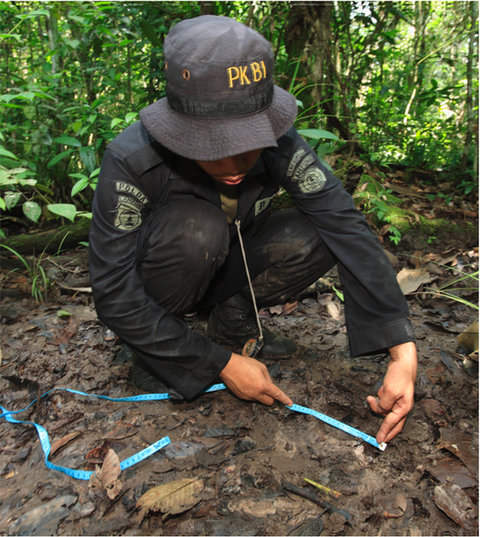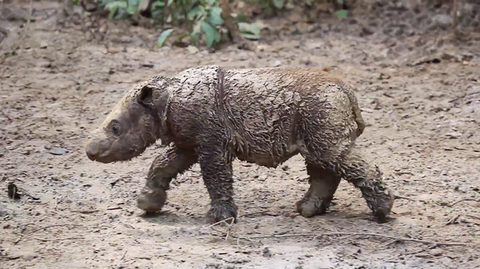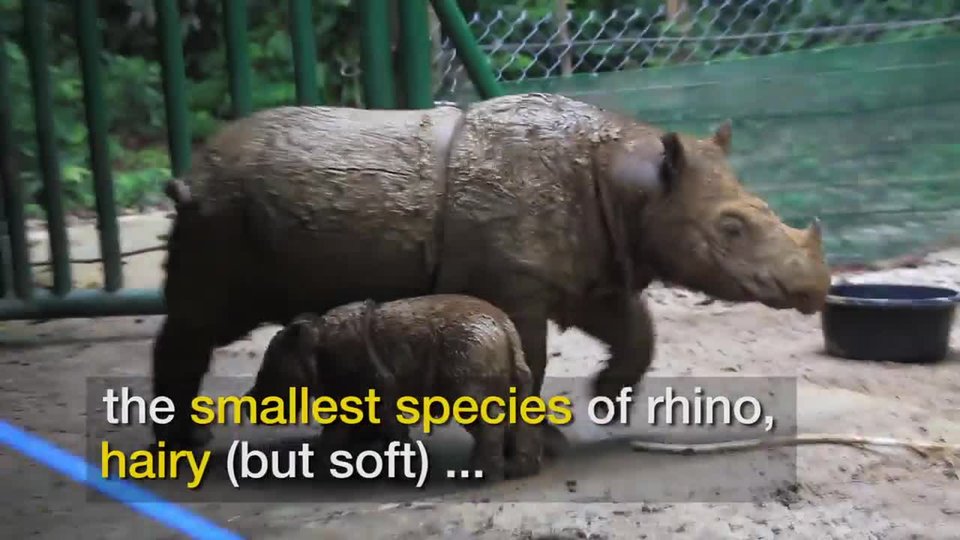Thetraphadbeenset,buttherewasnorushinga770‑kilogram(1,700‑pound)rhino.Theconservationists waitedand waited.
Then,ithappened.Therhinosteppedontoaleafyspot.Itfellintoashallowpit.Theconservationistshaddugthatpitintheforestfloor.Butwhydidtheywanttotrapa rhino?
It’sallpartofaplan.TheyaretryingtosavetheSumatranrhinofrom extinction.It’scalledtheSumatran Rhino Rescue.

TheSumatranrhinocerosisthesmallestoftherhino family.

ThisrhinoisnowlivingintheSumatranRhinoSanctuary.Here,itissafefrom poachers.
RhinosinTrouble
Allfiverhino speciesareindangerofextinction.TheSumatranrhinoisthemost endangeredof all.
Rhinoshavebeenhuntedfortheirvaluablehorns.Forcenturies,theyhavebeenusedinAsianmedicine.Powderedrhinohornshavebeenusedtotreateverythingfromasthmatochicken pox.Noproofexiststhatrhinohornscureillness.Yet,peoplestillwant them.
ARescuePlan
Therescueplanistosafelycaptureasmanywildrhinosaspossible.Therhinoswouldbetakentonearbysanctuaries.Scientistswouldthenassistintheirreproduction.Thisiscalledcaptive breeding.

A conservationistmeasuresarhino track.
Rightnow,there’sonlyoneplacewherethiscanhappen.It’scalledtheSumatranRhino Sanctuary.
Sumatranrhinosarenotsocialanimals.Theycannotlivetogether.Arhino’spregnancylasts15 months.Yet,iffemalerhinoscan’tfindamate,theygoalongtimewithoutbreeding.Thismakesproblemsthatcanpreventthefemalefromgetting pregnant.
ProtectTheNatural World
Protectingtheplanetisvital!TheNationalGeographicSocietyhassetagoaltohelpimprovethestatusof100speciesorpopulationsby 2030.

